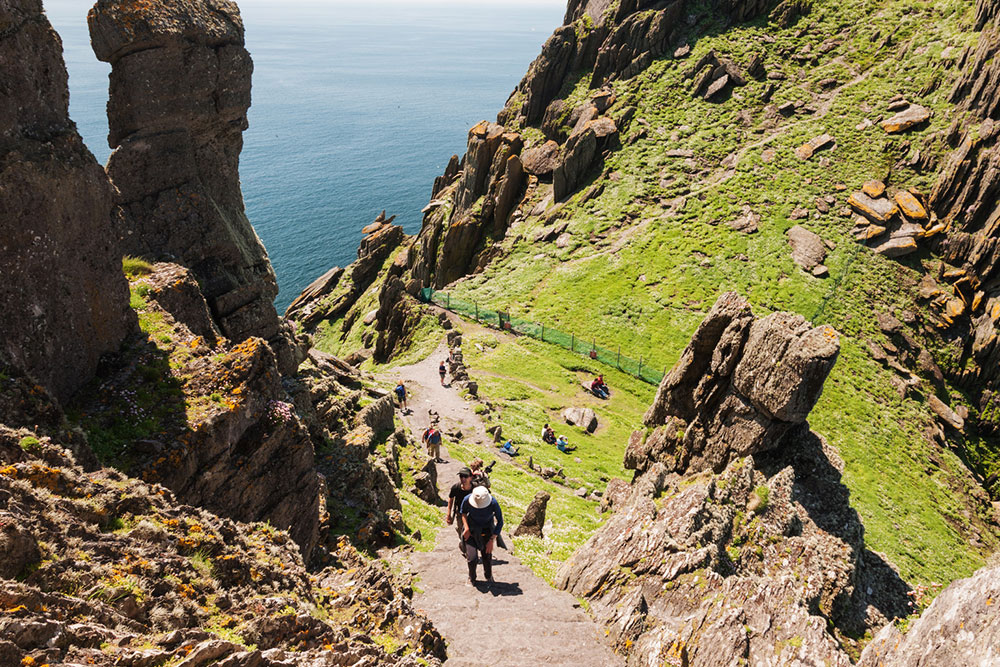10 most popular tourist destinations in Ireland

Located off the coast of Europe, Ireland is a picturesque country rich in culture, luscious green landscapes, and delicious food. Travelers often visit the place to explore its charming small towns and countryside. Those who wish to visit Ireland will find no dearth of adventure and leisure spots, from luxurious beachside cities and quaint mountain retreats to bustling urban cities with vibrant nightlife. Here are some of the must-visit places and attractions in the country.
1. Donegal
Donegal, a cozy town at the mouth of the River Eske, is known for its beckoning 15th-century Donegal Castle, expansive Donegal Bay, stunning northwest coast coastline, and charming 1700s food and drinking places to explore the local cuisine and culture.
2. Dublin
Ireland’s capital, Dublin, sees much hustle and bustle and is a must-visit. It is also known for its street entertainment, culture, arts, and music, with the National Theater of Ireland and plenty of festivals and museums to explore. Grafton Street is the historic shopping center of the capital city, Dublin, and is sought after globally by shopping enthusiasts. One can also visit the 22-acre St. Stephens Green Park, which has a beautiful Victorian layout and stunning flower beds. It is especially worth visiting from early spring to late autumn.
3. Belfast
Belfast, the capital city of Northern Ireland, is quite known, as this was where the famous Titanic was built. Belfast City boasts a captivating history and a welcoming atmosphere, and it houses the impressive Titanic Quarter, which attracts many visitors for its unique charm.
4. Lisburn
Located just a few miles away from Belfast, Lisburn is a charming little city known for its Irish linen industry and stunning castles and gardens. It is also a top destination, located in the eastern part of Northern Ireland.
5. Glendalough
Famous among nature lovers, Glendalough is another gem nestled in the hills of County Wicklow and Glendalough’s valley. It is home to many monastic sites and has a rich history.
6. Ring Of Kerry
People worldwide visit the Ring of Kerry for its untouched beauty and picturesque landscapes. It has stunning Atlantic-facing beaches and many water sports, including horseback riding, fishing, and cycling, for adventure enthusiasts.
7. Cliffs of Moher
This cliff is another popular tourist site in Ireland and is almost entirely vertical. The Cliffs of Moher boast parts of Connemara National Park and the deep waters of Galway Bay. Many buses from nearby cities bring tourists to this destination.
8. Sligo
Nestled in Northern Ireland, Sligo is another must-visit spot with stunning natural beauty. It’s perfect for adventure seekers, as it offers surfing and mountain hikes. One can explore cultural sites like the Model Art Center and Sligo Abbey at a more leisurely pace. Don’t forget to stop by along the Sligo Food Trail. With its warm hospitality and medieval charm, Siligo promises an unforgettable experience for all visitors.
9. Limerick
It is one of the largest cities in Ireland and has a rich cultural history with incredible art galleries, museums, and grand historical monuments. It also houses quaint pubs and restaurants.
10. Cork
This is the second largest city after Dublin. Cork City, with its attractive coastlines, has a peculiar laid-back vibe. It’s a great city to explore cafes and restaurants, Blarney Castle, parks, and Cork’s English Market.



